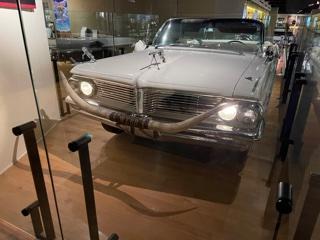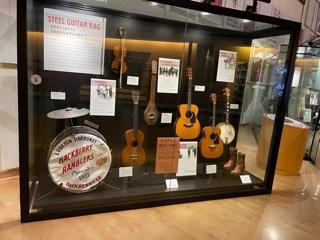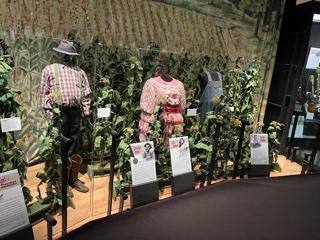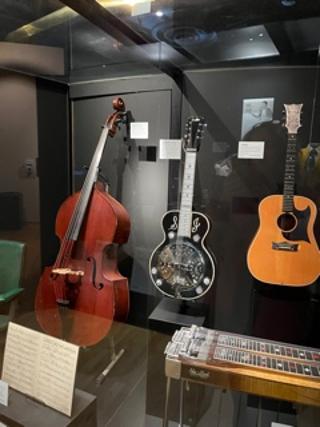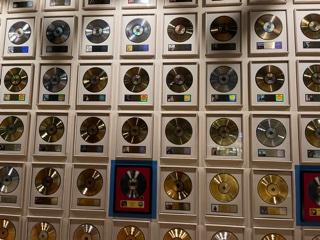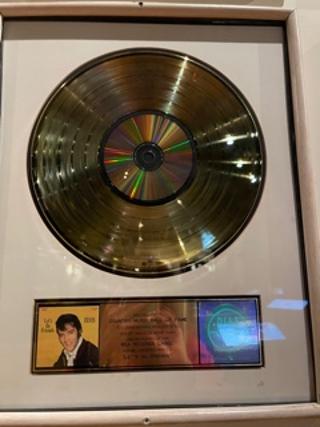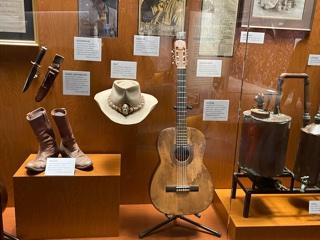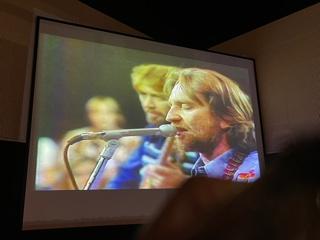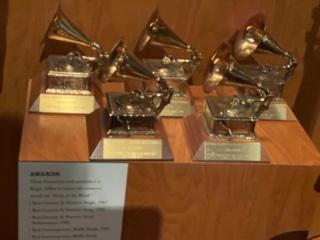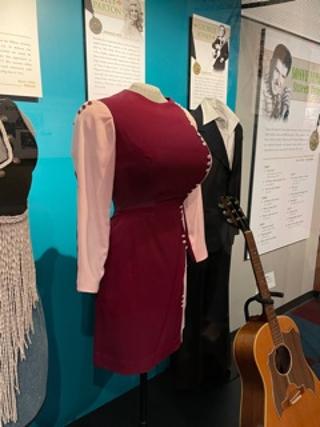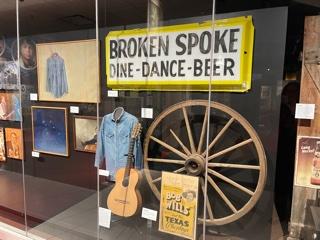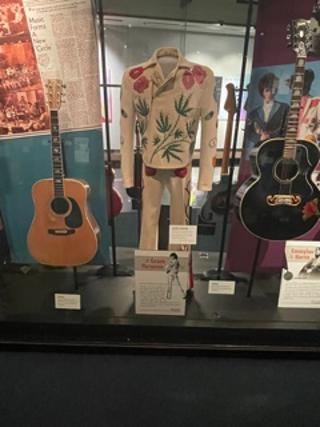There are so many great historical artifacts at this museum, that you are simply awestruck by the enormity. At the same time it is very relatable, because of its music history. By the time you’ve covered the whole facility you are completely caught up in the moment of how music can transcend everything. The artists are displays are vast and various. Some you may know, some not. But all of these artistic displays have one thing in common, they’re all country! Even though there have been many off shoots of country music, they all have deep-seated roots in country music. Whether or not you’re a fan, you too will be blown away by its rich history.
Information About The Country Music Hall of Fame:
The Country Music Hall of Fame and Museum in Nashville, Tennessee, is one of the world’s largest museums and research centers dedicated to the preservation and interpretation of American vernacular music. Chartered in 1964, the museum has amassed one of the world’s most extensive musical collections.
The Country Music Hall of Fame and Museum is one of the world’s largest and most active popular music research centers and the world’s largest repository of country music artifacts. Early in the 1960s, as the Country Music Association‘s (CMA) campaign to publicize country music was accelerating, CMA leaders determined that a new organization was needed to operate a country music museum and to carry out research and education activities beyond CMA’s scope as a trade organization. Toward this end, the nonprofit Country Music Foundation (CMF) was chartered by the state of Tennessee in 1964 to collect, preserve, and publicize information and artifacts relating to the history of country music. Through CMF, industry leaders raised money with the effort of CMA Executive Director Jo Walker-Meador to build the Country Music Hall of Fame and Museum, which opened on April 1, 1967. Located at the head of Music Row, the museum was erected on the site of a small Nashville city park. This hall of fame was modeled after the National Baseball Hall of Fame and Museum in Cooperstown, New York. At this point, artifacts began to be displayed and a small library was built in a loft above one of the museum’s galleries.[1]
Early in the 1970s, the basement of the museum building was partially complete, and library expansion began, embracing recordings, but also books and periodicals, sheet music and songbooks, photographs, business documents, and other materials. At the outset, CMA staff had run the museum, but by 1972, the museum (already governed by its own independent board of directors) acquired its own small staff.
Building expansion took place in 1974, 1977, and 1984 to store and display the museum’s growing collection of costumes, films, historic cars, musical instruments, and other artifacts. An education department was created to conduct ongoing programs with Middle Tennessee schools; an oral history program was begun; and a publications department was launched to handle books, as well as the Journal of Country Music.
To become more accessible, the Country Music Hall of Fame and Museum moved to a new, 140,000-square-foot (13,000 m2) facility in the heart of downtown Nashville‘s arts and entertainment district in May 2001. In 2014, the museum unveiled a $100 million expansion, nearly doubling its size to 350,000 square feet of galleries, archival storage, education classrooms, retail stores, and special event space.
In the museum’s core exhibition, Sing Me Back Home: A Journey Through Country Music, visitors are immersed in the history and the sounds of country music, its origins and traditions, and the stories and voices of many of its architects. The story is revealed through artifacts, photographs, text panels, recorded sound, vintage video, and interactive touchscreens. Sing Me Back Home is enhanced by numerous, rotating limited-engagement exhibits. The ACM Gallery and the Dinah and Fred Gretsch Family Gallery offer visitors a hands-on immersion into today’s country music with artifacts from today’s country stars and a series of technology-enhanced activities. The ACM Gallery houses the annual exhibition, American Currents: State of Music, which chronicles country music’s most recent past.
In addition to the galleries, the museum has the 776-seat CMA Theater, the Taylor Swift Education Center, and several multi-purpose event rental spaces. Other historic properties of the Country Music Hall of Fame and Museum include one of the country’s oldest letterpress print shop Hatch Show Print (located inside the museum) and Historic RCA Studio B[4] (located on Music Row), Nashville’s oldest surviving recording studio, where recordings by Country Music Hall of Fame members Elvis Presley, Dolly Parton, Waylon Jennings, and many others were made.
The Country Music Hall of Fame and Museum has developed multiple platforms to make its collection accessible to a wider audience. From weekly instrument demonstrations to its flagship songwriting program for schools, Words & Music, the museum offers an aggressive schedule of educational and family programs. The museum also operates CMF Records, a Grammy-winning re-issue label (The Complete Hank Williams and Night Train to Nashville: Music City Rhythm & Blues, 1945-1970); and CMF Press, a publishing imprint that has released books in cooperation with Vanderbilt University Press and other major trade publishing houses.
The Hall of Fame Rotunda features a mural, The Sources of Country Music, by Thomas Hart Benton. It was Benton’s final work; as he died in his studio while completing it.
Seeing this museum in all of its glory is something everyone has to do, it out our God given right to witness historical artifacts that The Country Music Hall of Fame Museum houses. This one’s a big thumbs up for me.
* Note Some Content Was Taken Off Of Their Website.

